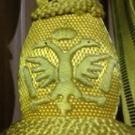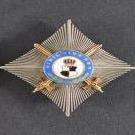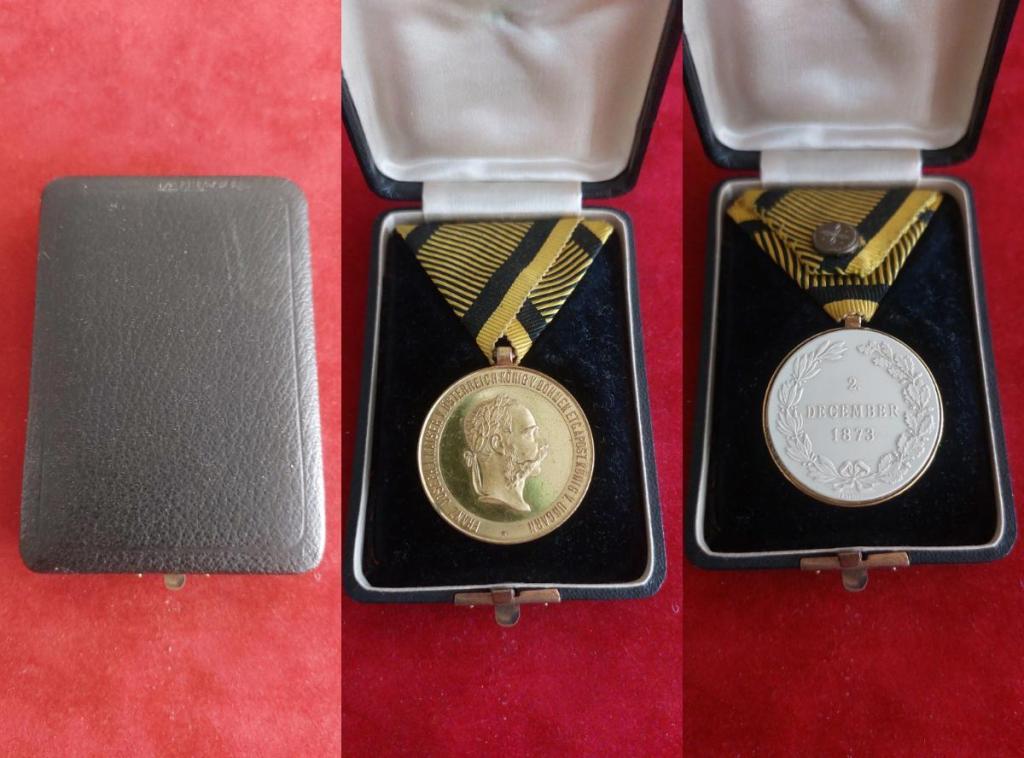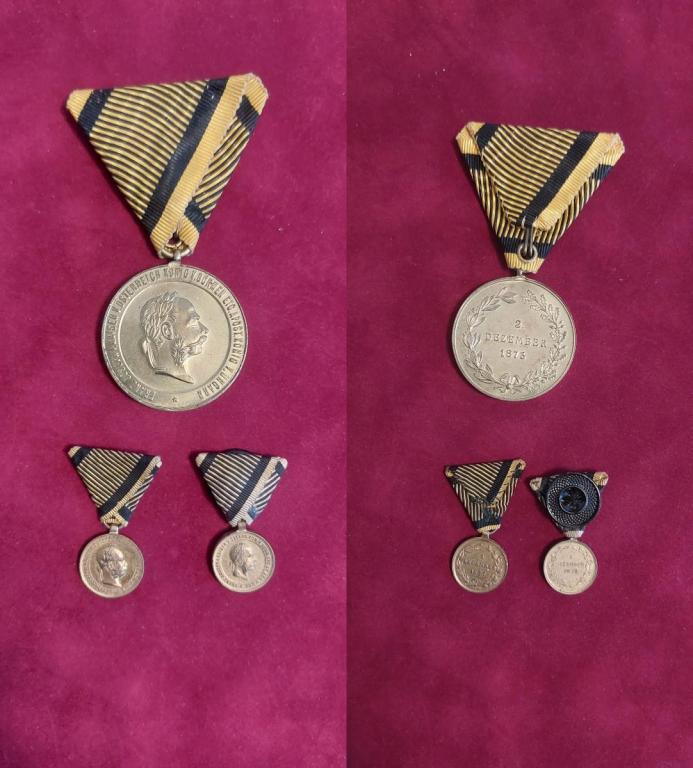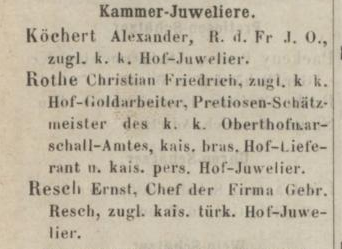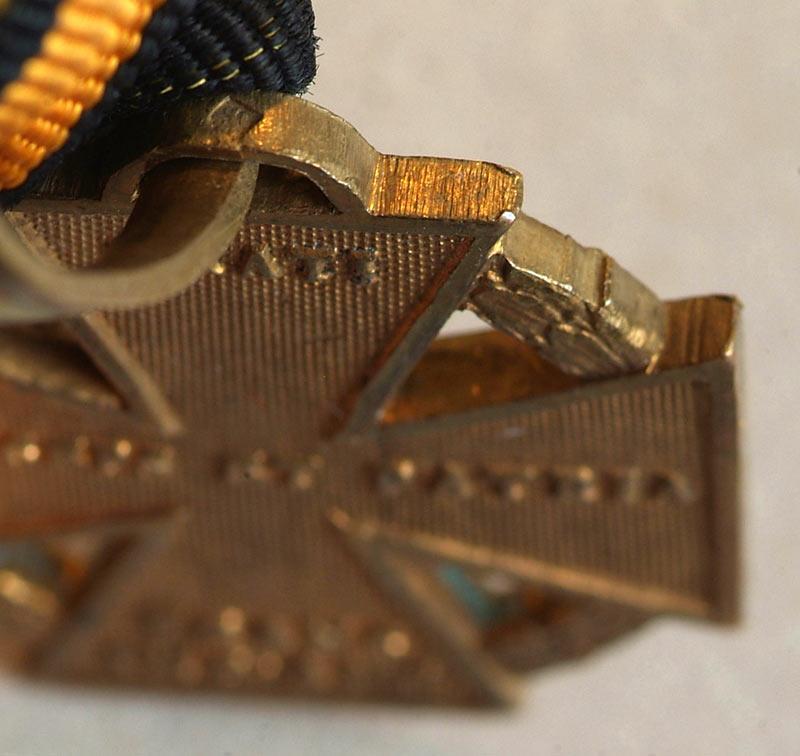
tifes
Active Contributor-
Posts
201 -
Joined
-
Last visited
-
Days Won
3
tifes last won the day on February 17 2023
tifes had the most liked content!
About tifes

Profile Information
-
Gender
Male
-
Location
Europe
Recent Profile Visitors
4,108 profile views
tifes's Achievements
-
a iron crown with some question&opinions wanted
tifes replied to wangyaokang2003's topic in Austro-Hungarian Empire
Here, I would be very careful. Rozet&Fischmeister piece (first on left) is probably having the War Decoration replaced. It's definitely not original one and it might be latter manufacture. Köchert piece (in the middle) has the War Decoration completely missing as it was originally a piece with WD. Moreover central shields looked to be damaged and repaired (not very sophisticated indeed) Last one (on the right) seems like gilded bronze piece made without WD in somehow better quality. Regards, Tifes/Tomas -
is this Franz Joseph Order looks great?
tifes replied to wangyaokang2003's topic in Austro-Hungarian Empire
Hi, FJO is in gilded bronze. Yes, you can definitely find better pieces on the market but on the other side I do not see there any massive/significant damage to enamels (if not tricked by the reflection). It's about the preference and price, willing to pay. Red Cross Officer with War Decoration looks to be in very good condition indeed. Moreover, it's cased. If the price is not over the roof, I would take it. Regards, Tifes/Tomas -
tifes started following Long service cross 50 years
-
Well, I would rather skip this one...
-
Hi, it looks like Resch miniature chain with FJO knight-mini (before 1867, without hallmarks) to me. Both ones should be in gold. Case doesn't belong to it, I would say. Regards, t.
-
Hi, well, I didn´t say that "H.D. Rauch" piece is not an original 2nd piece (on the contrary) but I liked more the MDZ 1st class for 50 years on the first picture, which was in better quality. If you would like to acquire an awarded piece in gilded silver as displayed by Elmar Lang then prepare yourself to wait for a very long time and then to pay a significant price for it (now I would say between 5000 to 6000 EUR). Regards, Tomas/Tifes
-
Dodgey looking Gold ‘Der Tapferkeit’ on eBay…
tifes replied to Farkas's topic in Austro-Hungarian Empire
It would be from the same "basket" as the previous one. In my honest opinion not worth of the money asked as an addition to a decent collection. -
Hi, H.D. Rauch auction. I think it´s a private purchased piece in gilded bronze, with good chances to be made pre-1918 (further inspection would be fine). The whole thing was basically simple as higher officer, usually general or colonel (there were also some Lt.Col, few Majors and one Captain only) reached 50 years of service, received the Military Service Cross 1st Class for 50 years in silver, and had their original 2nd Class Crosses privately altered by adding a crown in surmounting. This is what it looks like, maybe not the best quality though. Regards, Tomas/Tifes
-
Hi, No one knows the exact number of how many of KM 1873 medals were made, but rough estimates says around 2.5 million pieces till 1918. That's a huge number, and there were probably dozens of makers. They were produced in different variations, metals, variants. From a phaleristic point of view, the "KOENIG" and "DEZEMBER" variants are more popular (and thus more expensive), as are special finishes, e.g. in silver or with enameled or galalith (a form of early plastic) reverse. I don't know weather you will ever be able to decipher the letter "Z" on your medal and also in my opinion it is not even important how many leaves are in the wreath. What is important is to have KM 1873 in good condition and on the original ribbon in your collection, as it is one of the most iconic medals of old Austria. Some pics with examples of "Koenig", "Dezember" and Galalith reverse in the post. Regards, Tifes (Tomas)
-
Hi Stefan, „Among the most important manufacturers of the first production period were the Viennese company Alexander Kittner and, from the 1860s, the Joseph Resch company. “ - courtesy translation; Ludwigstorff/Ortner, Österreichs Orden und Ehrenzeichen, Part I/ Volume II, Der kaiserliche-österreichische Franz Joseph-Orden, page 292 I suppose that's not enough for you, but in the meantime, as your post came up, while I was at a militaria show in Germany and had the opportunity and honor (as always) to meet one of the greatest experts of Austrian orders, Mr. Rochowanski. He owned phaleristic shop in very downtown of Vienna (closed some years ago) and he had original and reprinted versions of old catalogues, including Resch, dated from 1864-1876, which contained orders. I had a chance to see them some 10 years ago. He confirmed the dates as peak of Gebr.Resch production (quoted also in Ludwigstorff/Ortner book), but he also advised me to look into “Fabrikanten” book (the same sources as you quoted here) for more precision as it could be a bit sooner. So, I did and he was right (as always). Gebr, Resch was established in 1853 and till 1857 he is stated only as “holder of stock of jewelry, gold and silver ware”, but since 1858 there is a new statement “delivery of all decorations of k.k. FJO for k.k. Lord Chamberlain's Office”, which basically means that 1858 is the year when (only) FJO production by Gebr. Resch started. So here I was obviously wrong and I apologize sincerely, but there is no proof that orders production started immediately after the company was set up in 1853 either. There is another fact confirmed, which was discussed here. Gebr. Resch had its branch in Romania, Bucharest. 1857: 1858: Gebr. Resch company was kuk Kammer-Juweliere (Chamber Jeweller) till 1876. In year 1877, Gebr. Resch is not listed anymore and it´s replaced by Mayer´s. This is generally considered as the end of its orders production. After this date Gebr. Resch is not figuring as the orders maker anymore. Facts, which you can verify here: https://alex.onb.ac.at/cgi-content/alex?aid=shb&size=45 In Dorotheum there are antiquity auctions held couple of times a year, with many gold and silver products from Rothe and Mayers. Please scroll it over, if you want. I am really not going to look in dozens of catalogues for some table clock (Rothe did not have own mechanism, but was doing “cases”), doses or vases or I don’t know what else. However, my primary reaction was at this very daring statement: Where is it stated? All (underlined!) means everything, right? Golden Fleece, StSO, LO, EKO, FJO + maybe also others (Elisabeth-Orden, Sternkreuzorden…). And no, "…are not known” doesn’t mean that some “Mr. Tomas” didn’t see them in his life and yes, it means the second, they are not known for the community. There is a book, which I quoted at the beginning, 6 volumes in 3 parts. It took 15 years for dr. Ludwigstorff to put it together. Of course, it´s not perfect but generally it´s considered a very important reference book. Right? He had access to HGM, Schatzkammer deposits and to the collection of all (only) Austrians important collectors. Displayed Gebr. Resch decorations in all these 6 books are FJO decorations (badges of knights, commander/GK + breast stars), EKO III so called “transition type” (“dickes Huhn”; about 1860/1865) and Merit Crosses. There is also a box for MVK earlier type (I have it too), but there is no proof that Gebr. Resch made MVK too (as other companies like Braun). But even if. And that´s pretty much all. Where are the others? Rothe which made indeed almost all decorations at the turn of centuries, employed 160 specialists only in the orders department. Gebr.Resch never reached this capacity and thus it wasn´t even possible. As I wrote above “inductive reasoning based on the empirical experience”. How likely is that the whole and entire HGM, Schatzkammer and Austrian collectors community do not have one single piece of MMTO, StSO or LO made by Gebr. Resch, but “Mr. Stefan” thinks different, showing us some picture (without any further context) with pretty cunning and by all means no toxic statement: Regards, Tomas
-
Dear Stefan, I see that from polite conversation you trespassed to toxic one. Please do not mix it up with some FB. This is serious forum. However, I think that I know the reason. Anyway, I wrote about production years of GB concerning only the decorations, based on the catalogues containing them. Earlier or later catalogues of this company simply do not have them listed. If GB made golden watches or jewellery in 1850s, it was not a object of this discussion. We are talking here about decorations not general antiquities. Well, I see ellipsoid suspension with "Gebr. RESCH" engraved. It would be lovely to see the rest, because as we all know, the devil is hidden in the details. In the recent past I should have seen MMTO Commander Cross of FM Borojević von Bojna and guess what...I did not... Regards, T.
-
Hi, the first sales catalogue, which also included the decorations, appeared after the establishment of the shop on Kohlmarkt in 1864 and the last one in 1876. All of the important order makers like Rothe or Mayers were jewellers and goldsmiths who also made watches, jewellery and bijoux. Rothe existed on this production until the early 1990s. And Zimbler, for example, originally made tinware. But that's not important from a phaleristic point of view. The Gebrüder Resch decorations that are known were FJO and VK. I personally have in my collection a MVK/KD etui for the 2nd model (1860-1866) with "Gebrüder Resch" signature on the inner part of the lid. There is also a corresponding MVK/KD in the etui, but I can't confirm it's GB production. In any case, GB made boxes so decorations probably too. Other decorations from other orders "departments", including MMTO, of GB production are not known. The "claim", as you stated it above, is then based on empirical induction. Regards, T.
-
Hi Farmer, "Gebrueder Resch" was a jewellery company based in Vienna, at Kohlmarkt. They produced high quality decorations like Franz-Joseph Order´s decorations (knight and commanders/GK crosses and breast stars) as well as Merit Crosses with or without crown in Gold and Silver, but also Military Merit Crosses (earlier versions,very scarce). Company was active in years 1864-1876. It´s generally believed that it moved to Romania afterwards, because there are not any further pieces made by Resch in Austria-Hungary after above-mentioned period, but they are in Romania. So it´s very interesting what you are saying. Coincidence of name and two different jewelers? it might be! There would be just one question left...what happened with Viennese "Gebrueder Resch" after 1876? Regards, Tomas
-
Hi, the original crosses had a stamp of the Vienna Mint (eagle in lozenge) on the loop (pls look at the picture, taken from net). In any case the cross is heavily worn off, the ribbon is just modern replacement and the same for the suspension. If the cross is not named on the rim (private finish, usually it contains name of awardee, his rank and sometimes the unit) then I would be looking for a more "complete" piece. Regards, T.
-
Hi, for me it's definitely a big NO! Both central medaillons might be originals as Rothe kept the parts of former AH decorations "in drawers", which were used in later collectors pieces till 1980s. So, the both central medaillons, avers and revers, could be pre-1918 originals, however further inspection in flesh would be required. The rest, the cross itself seems to be of much inferior quality and the worst comes with suspension with hallmarks/ maker's mark on it. These are just fakes as no other description comes to my mind, because they were made with the purpose to fool somebody. I would recommend to keep hands off it. Regards, Tifes (Tomas)
-
However, in next years (1915-1918), as the Great War progressed, it deteriorated quickly, ended up at the equivalent of today´s 3,6 EUR in 1918. These boxes were used for distribution and stocking in masses in retailers stores, as Enzo wrote above, and it mainly concerns WW1 period when BMVM became quite common decoration even for subaltern officers, so the demand was high. I dare to say this box originates from this period. Before 1914 BMVM wasn´t very common decoration as being usually awarded to Staff Officers (majors and up), much less often to long serving captains and only very occasionally and scarcely to 1st and 2nd lieutenants, usually for some life saving action (like engineers helping by floods and rescue someone from "big water").

